From Hollywood Reporter: The best film schools in the world
The best film schools in the world
Aug 19, 2010, 07:24 PM ET
AUSTRALIA
The Australian Film, Television and Radio School
The Australian Film, Television and Radio School has undergone some significant changes in the past two years, including the move to a new state-of-the-art campus in Sydney's film hub and an overhaul of the courses it offers to students and established industry practitioners. The 37-year-old national film school, funded annually by the Australian government with $22 million last year, holds a key position in the Australian film community with more than 2,000 graduates passing though its doors in that time. AFTRS alumni include Oscar-winning cinematographers like Dion Beebe ("Nine") and Andrew Lesnie ("The Lovely Bones") and director Jane Campion ("Bright Star"). An array of courses covering producing, digital media and visual effects, art direction, documentary, screenwriting, screen music, production design and editing are offered, but at the heart of the school are its award courses for new and emerging filmmakers. They include a foundation diploma, a graduate certificate and graduate diploma. Positions in those highly competitive courses are given each year on a merit system based on students' creative portfolios.
-- Pip Bulbeck
FRANCE
La Femis
Only 3% of hopefuls who take the entrance exam get into la Femis, the country's most prestigious film school. Housed in Pathe's old studios on Paris' rue Francoeur, la Femis is a public institution under the French Ministry of Culture and Communication, meaning tuition is free to French students. It offers a well-rounded overview of the film business, including artistic development and technical training. Alumni include the creme-de-la-creme of French filmmaking, from Louis Malle, Alain Resnais and Costa-Gavras to newcomers like Francois Ozon, Laetitia Masson, Noemie Lvovsky and Rebecca Zlotowski. In their first year, students are initiated into all aspects of production before specializing in a specific field chosen from seven main departments: directing, editing, sound, set design, cinematography, screenwriting and production. "More than 500 professionals come each year to give special classes or speeches," says Marine Multier, head of communications. "This helps our students succeed in the professional world after they leave."
-- Rebecca Leffler
GERMANY
Baden-Wurtemberg Film Academy
While most European film schools focus on film history and the philosophy of cinema, at Baden-Wurtemberg they roll up their sleeves and get to work. When Roland Emmerich wanted a team to wipe out humanity for 1996's "Independence Day," he went to the Baden-Wurtemberg Film Academy. Emmerich's friend Volker Engel, who taught animation there, recruited 14 students and graduates who would go on to win the 1997 Oscar for visual effects. Known for its practical approach to filmmaking, the academy is a leader in animation and visual effects training. In 2007, trade magazine 3D World ranked it the second-best animation college in the world, just behind France's Supinfocom. The school fields regular nominees in the student Oscar race and has twice won the honor. Tike Constantin Hebbeln got it in 2006 for "Nimmermeer" and Thorsten Schmid in 1998 for "Rochade." On-the-job experience is a key part of the academy's teaching. Baden-Wurtemberg only admits students who have at least one of year of practical experience in the film business and two years for its producers program. The academy also works to expose students to an international network of filmmakers by organizing exchange programs with partner institutions like New York's School of Visual Arts and Poland's National School of Film and TV in Lodz. Every year, Baden-Wurtemberg also organizes a Hollywood workshop, including studio tours and internships with production companies in L.A.
-- Scott Roxborough
INDIA
Whistling Woods International
Despite being home to the world's largest film industry, just five years ago India was in need of better-equipped film institutes. Enter veteran filmmaker Subhash Ghai, who launched Whistling Woods International, Asia's largest film, TV, animation and media arts institute. Located on 20 acres in Mumbai's Film City studio complex and sponsored by Ghai's Mukta Arts (which has produced some of Bollywood's biggest hits), WWI's faculty is headed by dean John Jerome Lee, a former entertainment industry executive. Its advisory board includes acclaimed director Shyam Benegal and superstar Shah Rukh Khan, DreamWorks Animation's Shelley Page, "Elizabeth" director Shekhar Kapur and producer David Puttnam. "Almost 80% of people working in the industry don't have professional training and hence end up learning on the job, which was the impetus for us to launch WWI," says Ghai's daughter, Meghna Ghai Puri, who is also WWI's president. "It offers a unique, two-year MBA in media and entertainment (for) people who want to be executives in areas such as marketing and finance." Specializations include directing, cinematography and editing, along with animation and acting. Tuition is about $28,900 for the two-year program.
-- Nyay Bhushan
ITALY
Scuola Nazionale di Cinema -- Centro Sperimentale di Cinematografia
Michelangelo Antonioni, Dino De Laurentiis, Vittorio Storaro and Italian screen icon Claudia Cardinale are just a few of the famous names who began their film education at the Centro Sperimentale, the oldest and most prestigious film school in Italy. Once accepted by the school's highly selective board, acting students study with leading man Giancarlo Giannini, cinematography students learn from Giuseppe Rotunno (Fellini's lenser on 1983's "And the Ship Sails On") and would-be directors work with helmer Roberto Faenza ("By the Light of Day"). Connected to the Cineteca Nazionale, one of the biggest film archives in Europe, the CSC regularly organizes seminars with international filmmakers, from Martin Scorsese to Wim Wenders. While continually upgrading its state-of-the-art equipment, Centro's tuition is a very reasonable at $2,000 per year for the two- and three-year programs. "One of Centro's peculiarities is its total effort in involving the students in all the movies made by CSC Production, and introducing graduates into working crews," says dean Andrea Crisanti.
-- Martina Riva
JORDAN
Red Sea Institute of Cinematic Arts
Offering the first and only MFA program in cinematic arts in the Middle East and North Africa, RSICA is a joint venture between the Royal Film Commission of Jordan and the School of Cinematic Arts at USC. Located in historic Aqaba (which any aspiring filmmaker should recognize from "Lawrence of Arabia"), RSICA launched in 2008, graduating its first class of 21 students in May 2002. With tuition in the $25,000 range, the school is another step forward for Jordan, which has garnered Hollywood's attention recently through an aggressive campaign to expand its burgeoning film sector. "Jordan is by far the most progressive and secular regime in that region," says James Hindman, dean and chief academic officer. "They started developing a media plan in 2003 which included a very active, western-style film commission as well as training for crews." With students coming from all over the region, including Lebanon, Kuwait, Syria and Iran, Hindman says the goal is to offer practical training that will allow them to "function on any film set in the world." "We want them to be able to eat," he adds with a laugh.
-- Kevin Cassidy
PHILIPPINES
The International Academy of Film and Television, Philippines
Founded in 2004, the IAFT is located at Bigfoot Studios, a professional studio on the tropical resort island of Cebu, giving students access to state-of-the-art equipment and facilities. "The academy prides itself on bringing Hollywood to Asia and a hands-on approach to filmmaking education," says Mark Martin, IAFT's executive director. He notes that, through Bigfoot Entertainment, students get to work on the sets of feature films for international release. The academy offers various diplomas in filmmaking, sound design and acting, and recently started a nine-month professional immersion program that guarantees students experience on one feature film from preproduction to post. IAFT has also signed an agreement with Jacksonville University allowing graduates to enter Jacksonville's B.A. program as sophomores. About 70 students graduate each year, with fees ranging from $7,970-$14,290.
-- Sonia Kolesnikov-Jessop
University of the Philippines Film Institute
The University of the Philippines Film Institute offers a four-year bachelor's degree in filmmaking, which combines film theory and production courses, as well as a master's degree in media studies. Both cost about $1,000 a year. The institute, which has about 75 film graduates a year, is equipped with basic camera and lighting equipment and has an editing lab for post production. In addition to lectures by notable Filipino cinematographers such as Nap Jamir and Neil Daza, the Institute offers workshops and short training courses covering all areas of production. "UPFI produces filmmakers, not technicians," notes senior lecturer Sari Delana. "Whether it is in mainstream filmmaking, independent filmmaking or television, many of our alumni have become directors." Recent alumni include helmers Raya Martin, who has had three films screened in Cannes, and Pepe Diokno, whose first feature, "Engkwentro," won the prize for best debut at Venice last year.
-- Sonia Kolesnikov-Jessop
SINGAPORE
Chapman University Singapore
Chapman University's Dodge College of Film and Media Arts partnered with Ngee Ann Polytechnic in Singapore in 2008 to offer an accelerated two-year degree program in creative producing. Specifically designed for film or communications graduates, its emphasis is on "content development and the creation of international co-productions," says dean Robert Bassett. Students can participate in a summer internship in China or an immersion program in Los Angeles. In addition, Singaporean students can work with those in Chapman to produce cross-cultural documentaries. Fees vary from $4,900 a year for Singaporeans to $22,470 for foreign students, who graduate with a fully fledged BFA from Chapman.
-- Sonia Kolesnikov-Jessop
New York University, Tisch School of the Arts Asia
Tisch opened its first international campus in Singapore in 2007, producing its initial class of graduates in May. The Asian campus now offers four MFA degrees in animation and digital arts, dramatic writing, film and international media producing. The curricula are identical to those at the school's New York Campus, explains the school's president, Pari Sara Shirazi. The schools even share some teachers, such as Todd Solondz and Oliver Stone, the artistic director of Tisch Asia. Singapore-based students have access to the New York campus' summer programs as well as internships, but are required to complete their studies in Singapore, at a cost of about $44,000 a year. The school's production facilities include two fully equipped teaching soundstages as well as access to a wealth of animation technology. "During the first year, students are immersed in both the art and craft of animation," says Jean-Marc Gauthier, director of the animation & digital arts department, Tisch Asia.
-- Sonia Kolesnikov-Jessop
TAIWAN
National Taiwan University of Arts
Counting Ang Lee, Hsiao-Hsien Hou and Chung-Hou Wang (Tung Wang) among its alumni, the Taipei university has had an independent department of motion pictures since 1981 and now features eight full-time faculty members and 20 part-timers. Its bachelor's and master's programs offer hands-on production experience, coupled with a broad exposure to the liberal arts. Students can choose between two course tracks: film production or cinema studies. To graduate with a master's, they must complete either a thesis or a creative work in the form of screenplay or film production. Since 1999, the department has held the Golden Lion International Student Film Awards, Taiwan's only student film competition recognized at an international level.
-- Sonia Kolesnikov-Jessop
UNITED KINGDOM
National Film and Television School
Oscar-winning animation guru Nick Park, award-winning cinematographer Roger Deakins and directors Lynne Ramsay, David Yates and Michael Caton-Jones all share this: They went to the U.K.'s National Film and Television School. The school offers two yearlong post-graduate M.A. courses in specific arenas, like directing or cinematography. "Our competitors abroad offer much longer courses and are more generalist," notes NFTS director and veteran producer Nik Powell. "Our courses are intense from the word go and not leisurely." Located on the outskirts of London, NFTS boasts the largest exclusive stage facilities for any school other than the Australian National Film School.
-- Stuart Kemp
The Australian Film, Television and Radio School
The Australian Film, Television and Radio School has undergone some significant changes in the past two years, including the move to a new state-of-the-art campus in Sydney's film hub and an overhaul of the courses it offers to students and established industry practitioners. The 37-year-old national film school, funded annually by the Australian government with $22 million last year, holds a key position in the Australian film community with more than 2,000 graduates passing though its doors in that time. AFTRS alumni include Oscar-winning cinematographers like Dion Beebe ("Nine") and Andrew Lesnie ("The Lovely Bones") and director Jane Campion ("Bright Star"). An array of courses covering producing, digital media and visual effects, art direction, documentary, screenwriting, screen music, production design and editing are offered, but at the heart of the school are its award courses for new and emerging filmmakers. They include a foundation diploma, a graduate certificate and graduate diploma. Positions in those highly competitive courses are given each year on a merit system based on students' creative portfolios.
-- Pip Bulbeck
FRANCE
La Femis
Only 3% of hopefuls who take the entrance exam get into la Femis, the country's most prestigious film school. Housed in Pathe's old studios on Paris' rue Francoeur, la Femis is a public institution under the French Ministry of Culture and Communication, meaning tuition is free to French students. It offers a well-rounded overview of the film business, including artistic development and technical training. Alumni include the creme-de-la-creme of French filmmaking, from Louis Malle, Alain Resnais and Costa-Gavras to newcomers like Francois Ozon, Laetitia Masson, Noemie Lvovsky and Rebecca Zlotowski. In their first year, students are initiated into all aspects of production before specializing in a specific field chosen from seven main departments: directing, editing, sound, set design, cinematography, screenwriting and production. "More than 500 professionals come each year to give special classes or speeches," says Marine Multier, head of communications. "This helps our students succeed in the professional world after they leave."
-- Rebecca Leffler
GERMANY
Baden-Wurtemberg Film Academy
While most European film schools focus on film history and the philosophy of cinema, at Baden-Wurtemberg they roll up their sleeves and get to work. When Roland Emmerich wanted a team to wipe out humanity for 1996's "Independence Day," he went to the Baden-Wurtemberg Film Academy. Emmerich's friend Volker Engel, who taught animation there, recruited 14 students and graduates who would go on to win the 1997 Oscar for visual effects. Known for its practical approach to filmmaking, the academy is a leader in animation and visual effects training. In 2007, trade magazine 3D World ranked it the second-best animation college in the world, just behind France's Supinfocom. The school fields regular nominees in the student Oscar race and has twice won the honor. Tike Constantin Hebbeln got it in 2006 for "Nimmermeer" and Thorsten Schmid in 1998 for "Rochade." On-the-job experience is a key part of the academy's teaching. Baden-Wurtemberg only admits students who have at least one of year of practical experience in the film business and two years for its producers program. The academy also works to expose students to an international network of filmmakers by organizing exchange programs with partner institutions like New York's School of Visual Arts and Poland's National School of Film and TV in Lodz. Every year, Baden-Wurtemberg also organizes a Hollywood workshop, including studio tours and internships with production companies in L.A.
-- Scott Roxborough
 France's la Femis |
Whistling Woods International
Despite being home to the world's largest film industry, just five years ago India was in need of better-equipped film institutes. Enter veteran filmmaker Subhash Ghai, who launched Whistling Woods International, Asia's largest film, TV, animation and media arts institute. Located on 20 acres in Mumbai's Film City studio complex and sponsored by Ghai's Mukta Arts (which has produced some of Bollywood's biggest hits), WWI's faculty is headed by dean John Jerome Lee, a former entertainment industry executive. Its advisory board includes acclaimed director Shyam Benegal and superstar Shah Rukh Khan, DreamWorks Animation's Shelley Page, "Elizabeth" director Shekhar Kapur and producer David Puttnam. "Almost 80% of people working in the industry don't have professional training and hence end up learning on the job, which was the impetus for us to launch WWI," says Ghai's daughter, Meghna Ghai Puri, who is also WWI's president. "It offers a unique, two-year MBA in media and entertainment (for) people who want to be executives in areas such as marketing and finance." Specializations include directing, cinematography and editing, along with animation and acting. Tuition is about $28,900 for the two-year program.
-- Nyay Bhushan
ITALY
Scuola Nazionale di Cinema -- Centro Sperimentale di Cinematografia
Michelangelo Antonioni, Dino De Laurentiis, Vittorio Storaro and Italian screen icon Claudia Cardinale are just a few of the famous names who began their film education at the Centro Sperimentale, the oldest and most prestigious film school in Italy. Once accepted by the school's highly selective board, acting students study with leading man Giancarlo Giannini, cinematography students learn from Giuseppe Rotunno (Fellini's lenser on 1983's "And the Ship Sails On") and would-be directors work with helmer Roberto Faenza ("By the Light of Day"). Connected to the Cineteca Nazionale, one of the biggest film archives in Europe, the CSC regularly organizes seminars with international filmmakers, from Martin Scorsese to Wim Wenders. While continually upgrading its state-of-the-art equipment, Centro's tuition is a very reasonable at $2,000 per year for the two- and three-year programs. "One of Centro's peculiarities is its total effort in involving the students in all the movies made by CSC Production, and introducing graduates into working crews," says dean Andrea Crisanti.
-- Martina Riva
JORDAN
Red Sea Institute of Cinematic Arts
Offering the first and only MFA program in cinematic arts in the Middle East and North Africa, RSICA is a joint venture between the Royal Film Commission of Jordan and the School of Cinematic Arts at USC. Located in historic Aqaba (which any aspiring filmmaker should recognize from "Lawrence of Arabia"), RSICA launched in 2008, graduating its first class of 21 students in May 2002. With tuition in the $25,000 range, the school is another step forward for Jordan, which has garnered Hollywood's attention recently through an aggressive campaign to expand its burgeoning film sector. "Jordan is by far the most progressive and secular regime in that region," says James Hindman, dean and chief academic officer. "They started developing a media plan in 2003 which included a very active, western-style film commission as well as training for crews." With students coming from all over the region, including Lebanon, Kuwait, Syria and Iran, Hindman says the goal is to offer practical training that will allow them to "function on any film set in the world." "We want them to be able to eat," he adds with a laugh.
-- Kevin Cassidy
PHILIPPINES
The International Academy of Film and Television, Philippines
Founded in 2004, the IAFT is located at Bigfoot Studios, a professional studio on the tropical resort island of Cebu, giving students access to state-of-the-art equipment and facilities. "The academy prides itself on bringing Hollywood to Asia and a hands-on approach to filmmaking education," says Mark Martin, IAFT's executive director. He notes that, through Bigfoot Entertainment, students get to work on the sets of feature films for international release. The academy offers various diplomas in filmmaking, sound design and acting, and recently started a nine-month professional immersion program that guarantees students experience on one feature film from preproduction to post. IAFT has also signed an agreement with Jacksonville University allowing graduates to enter Jacksonville's B.A. program as sophomores. About 70 students graduate each year, with fees ranging from $7,970-$14,290.
-- Sonia Kolesnikov-Jessop
University of the Philippines Film Institute
The University of the Philippines Film Institute offers a four-year bachelor's degree in filmmaking, which combines film theory and production courses, as well as a master's degree in media studies. Both cost about $1,000 a year. The institute, which has about 75 film graduates a year, is equipped with basic camera and lighting equipment and has an editing lab for post production. In addition to lectures by notable Filipino cinematographers such as Nap Jamir and Neil Daza, the Institute offers workshops and short training courses covering all areas of production. "UPFI produces filmmakers, not technicians," notes senior lecturer Sari Delana. "Whether it is in mainstream filmmaking, independent filmmaking or television, many of our alumni have become directors." Recent alumni include helmers Raya Martin, who has had three films screened in Cannes, and Pepe Diokno, whose first feature, "Engkwentro," won the prize for best debut at Venice last year.
-- Sonia Kolesnikov-Jessop
SINGAPORE
Chapman University Singapore
Chapman University's Dodge College of Film and Media Arts partnered with Ngee Ann Polytechnic in Singapore in 2008 to offer an accelerated two-year degree program in creative producing. Specifically designed for film or communications graduates, its emphasis is on "content development and the creation of international co-productions," says dean Robert Bassett. Students can participate in a summer internship in China or an immersion program in Los Angeles. In addition, Singaporean students can work with those in Chapman to produce cross-cultural documentaries. Fees vary from $4,900 a year for Singaporeans to $22,470 for foreign students, who graduate with a fully fledged BFA from Chapman.
-- Sonia Kolesnikov-Jessop
New York University, Tisch School of the Arts Asia
Tisch opened its first international campus in Singapore in 2007, producing its initial class of graduates in May. The Asian campus now offers four MFA degrees in animation and digital arts, dramatic writing, film and international media producing. The curricula are identical to those at the school's New York Campus, explains the school's president, Pari Sara Shirazi. The schools even share some teachers, such as Todd Solondz and Oliver Stone, the artistic director of Tisch Asia. Singapore-based students have access to the New York campus' summer programs as well as internships, but are required to complete their studies in Singapore, at a cost of about $44,000 a year. The school's production facilities include two fully equipped teaching soundstages as well as access to a wealth of animation technology. "During the first year, students are immersed in both the art and craft of animation," says Jean-Marc Gauthier, director of the animation & digital arts department, Tisch Asia.
-- Sonia Kolesnikov-Jessop
TAIWAN
National Taiwan University of Arts
Counting Ang Lee, Hsiao-Hsien Hou and Chung-Hou Wang (Tung Wang) among its alumni, the Taipei university has had an independent department of motion pictures since 1981 and now features eight full-time faculty members and 20 part-timers. Its bachelor's and master's programs offer hands-on production experience, coupled with a broad exposure to the liberal arts. Students can choose between two course tracks: film production or cinema studies. To graduate with a master's, they must complete either a thesis or a creative work in the form of screenplay or film production. Since 1999, the department has held the Golden Lion International Student Film Awards, Taiwan's only student film competition recognized at an international level.
-- Sonia Kolesnikov-Jessop
UNITED KINGDOM
National Film and Television School
Oscar-winning animation guru Nick Park, award-winning cinematographer Roger Deakins and directors Lynne Ramsay, David Yates and Michael Caton-Jones all share this: They went to the U.K.'s National Film and Television School. The school offers two yearlong post-graduate M.A. courses in specific arenas, like directing or cinematography. "Our competitors abroad offer much longer courses and are more generalist," notes NFTS director and veteran producer Nik Powell. "Our courses are intense from the word go and not leisurely." Located on the outskirts of London, NFTS boasts the largest exclusive stage facilities for any school other than the Australian National Film School.
-- Stuart Kemp




































































































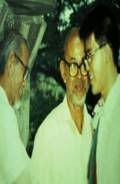





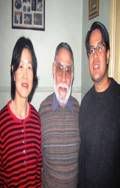





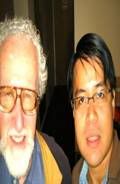

































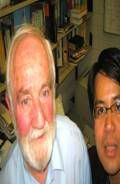























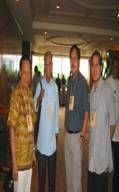




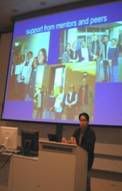

















2 Comments:
Wow! Two of ours went in!
By the way, thanks for pointing out those coffee shops! I was totally unaware of them haha
Will try them out the next time I visit UP! =)
:)
Post a Comment
<< Home